Abstract
The in vitro activities of two new oral cephalosporins, Ro 19-5247 and Ro 15-8074, were compared with the in vitro activities of cefuroxime, cefaclor, amoxicillin-clavulanate, trimethoprim-sulfamethoxazole (TMP-SMZ), and doxycycline against a variety of bacterial species. MIC50s (MICs required to inhibit 50% of strains) of Ro 19-5247 were less than or equal to 0.13 micrograms/ml for streptococci (except Streptococcus faecalis) and Haemophilus influenzae; 0.25 to 2 micrograms/ml for most strains of Enterobacteriaceae, Aeromonas hydrophila, Branhamella catarrhalis, and gram-positive anaerobic bacteria; and 1 to 8 micrograms/ml for methicillin-susceptible staphylococci. MIC50s of Ro 15-8074 were similar to those of Ro 19-5247, except that gram-positive aerobes and anaerobes were less susceptible. Both Ro 19-5247 and Ro 15-8074 had greater in vitro activity against strains of Enterobacteriaceae than did comparative beta-lactams and doxycycline; TMP-SMZ had the broadest spectrum of activity against these organisms. None of the cephalosporins were active against methicillin-resistant staphylococci, S. faecalis, most nonfermenters, or Bacteroides sp. Inoculum size variations affected MICs in a species-dependent manner for beta-lactams and unpredictably for TMP-SMZ but had little effect for doxycycline. Bactericidal activity was consistent with beta-lactams, inconsistent with TMP-SMZ, and uncommon with doxycycline.
Full text
PDF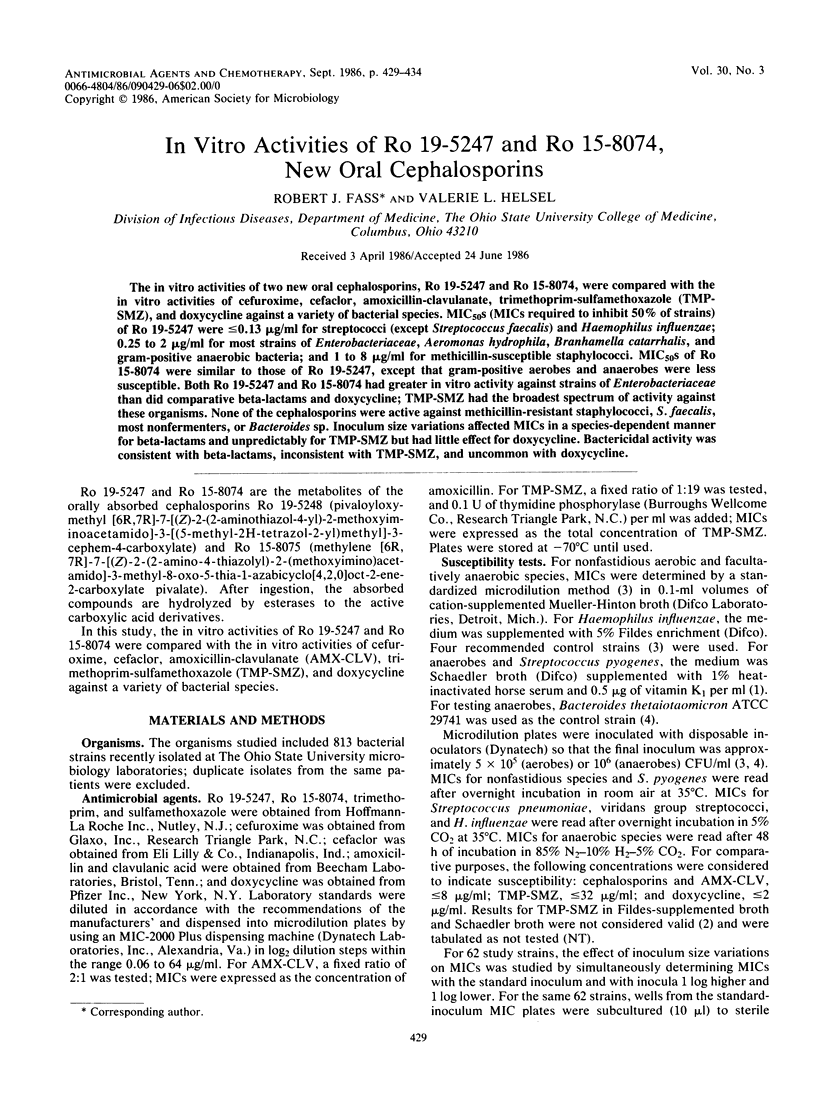
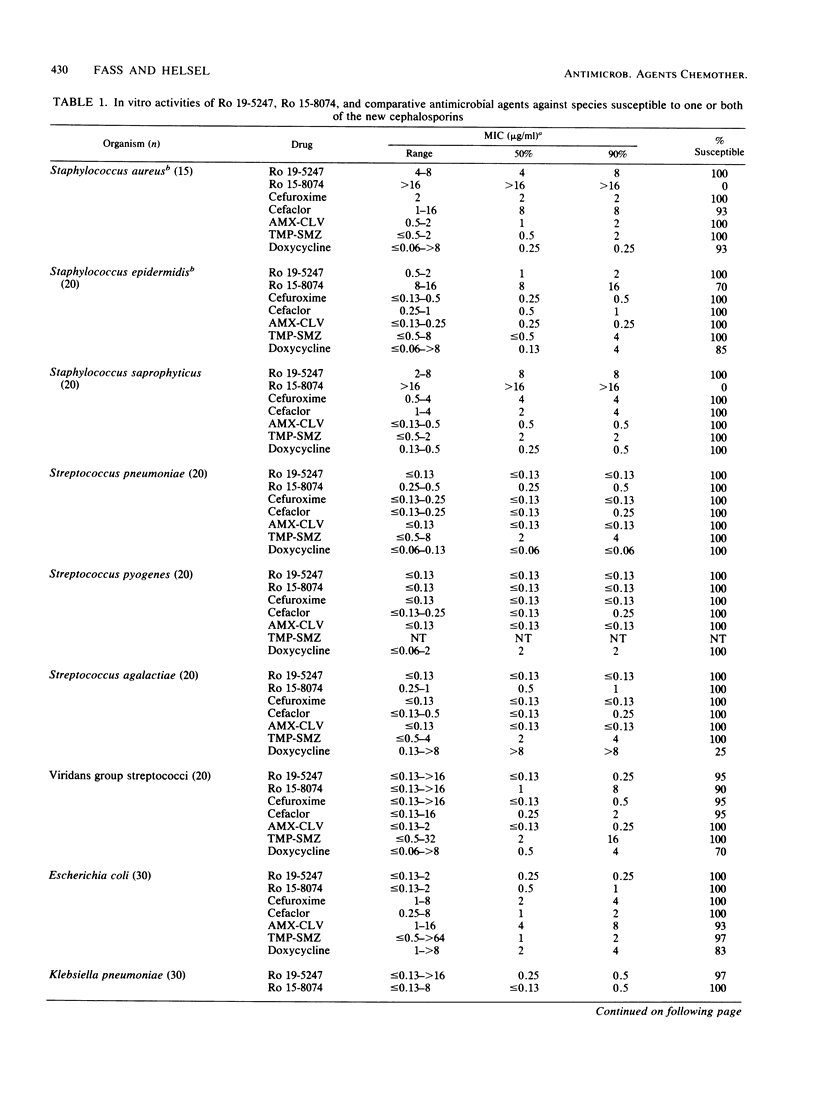
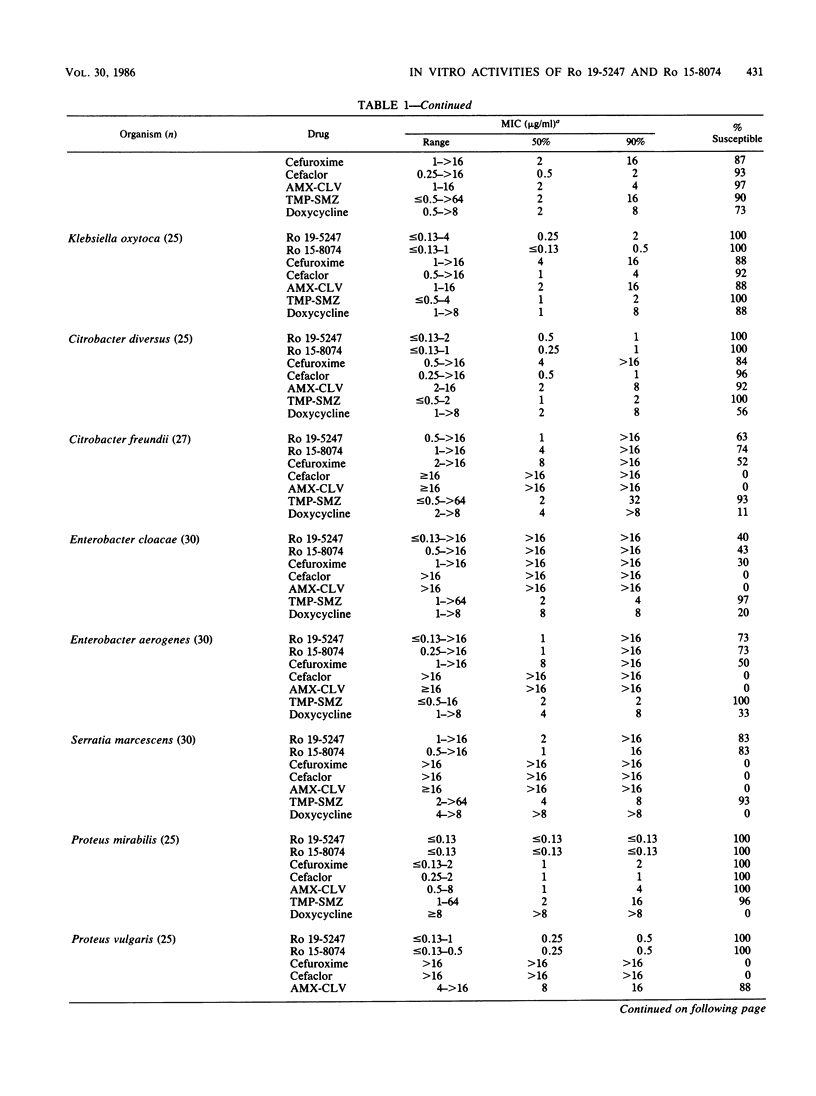
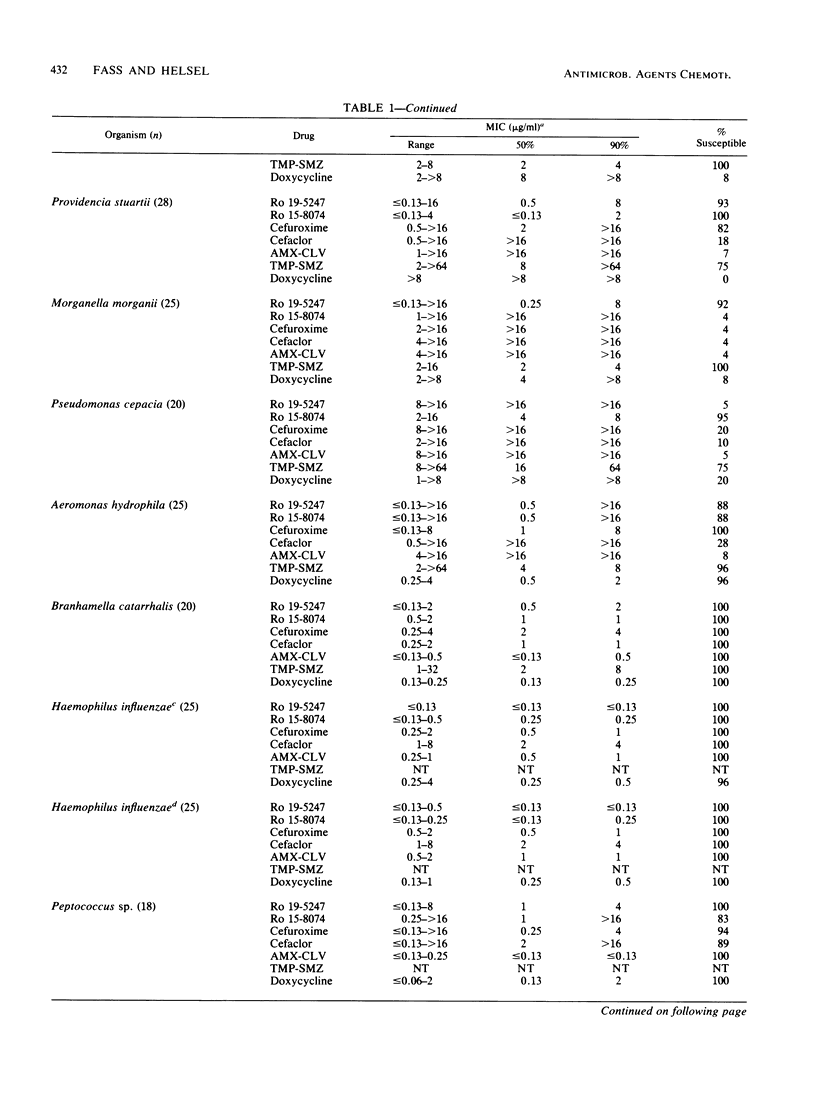
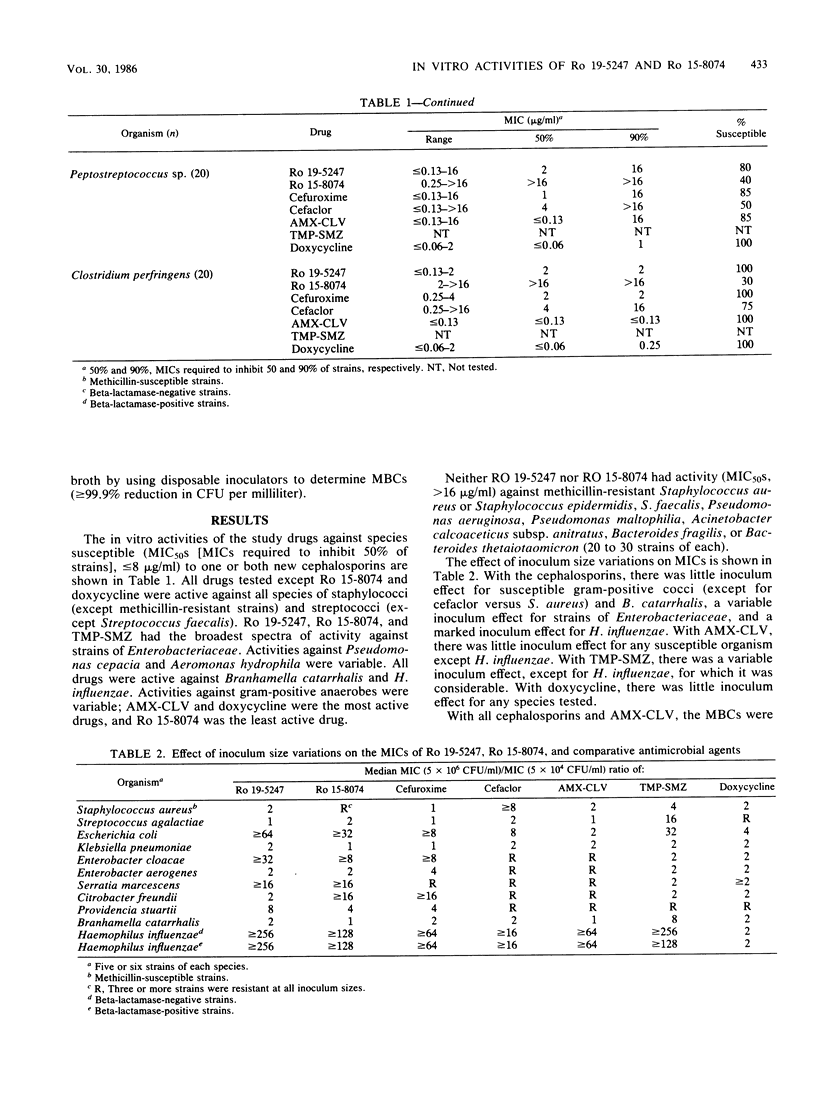
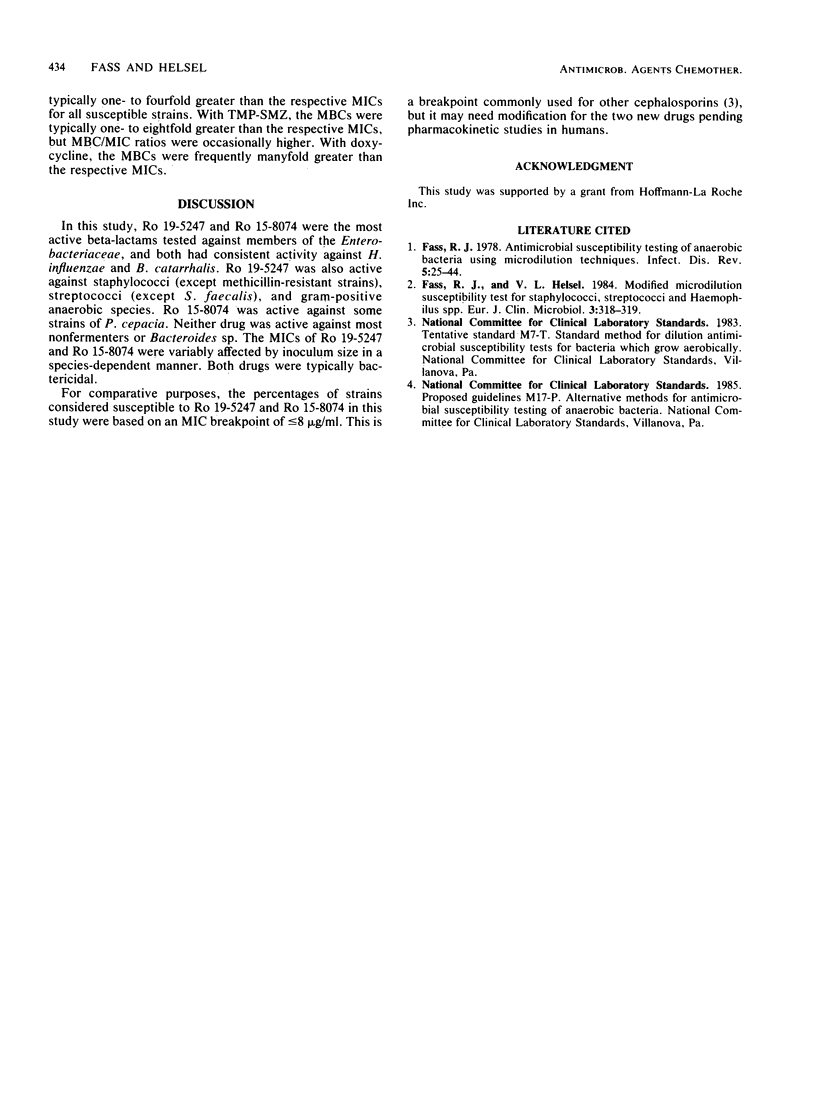
Selected References
These references are in PubMed. This may not be the complete list of references from this article.
- Fass R. J., Helsel V. L. Modified microdilution susceptibility test for staphylococci, streptococci and Haemophilus spp. Eur J Clin Microbiol. 1984 Aug;3(4):318–319. doi: 10.1007/BF01977481. [DOI] [PubMed] [Google Scholar]


